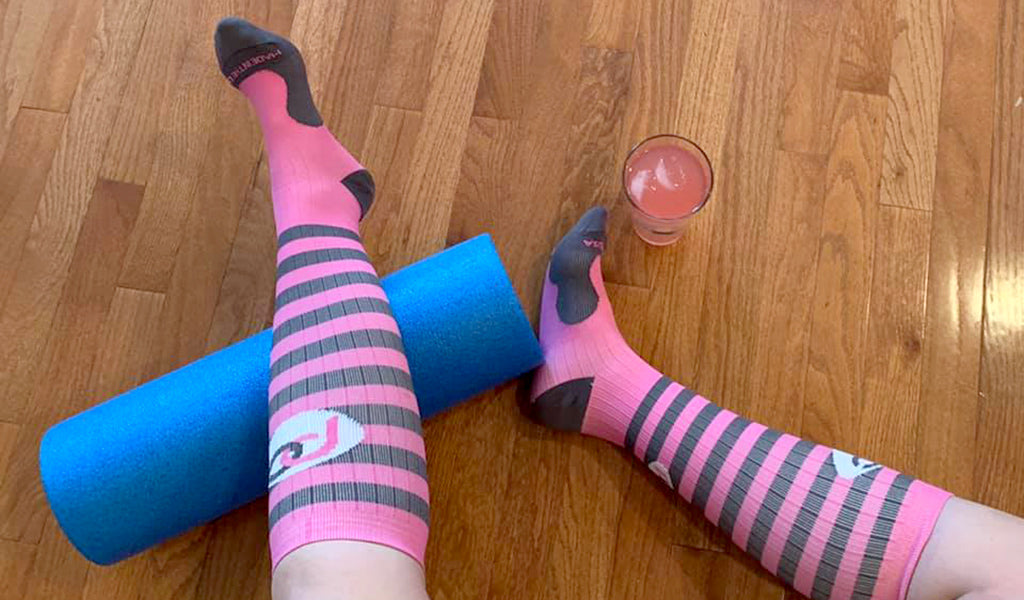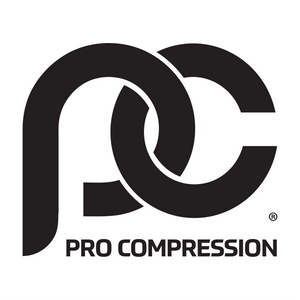Consider Foam Rolling As Part of Your Recovery Strategy

Foam rolling is a form of self-massage using a foam roller. Also known as self-myofascial release, foam rolling has a function similar to a deep-tissue massage. As the name would suggest, a foam roller is simply a long roll of firm foam. Foam rolling is practiced by placing a tight, constrained, or sore muscle over the roller, then pressing in deeply while rolling back and forth over the affected area. This lengthens and smooths the muscle, loosening knots and relieving tension making it one of the best ways to enhance exercise recovery.
While particularly valuable for fitness enthusiasts, people of all sorts can gain from this simple form of self-massage, especially when combined with graduated compression socks. Here are the six biggest benefits of foam rolling:
Loosen Tight Muscles
Knots and tightness in muscle develop when muscles are unable to relax, forcing them stay in a contracted position. When a foam roller is pushed deep into tense muscle, the adhesion (or pressure point) in the muscle is released, and the muscle is finally able to relax normally. Foam rolling also increases blood flow to the muscle, which helps break up pressure points. A foam roller is certainly one of the best and simplest ways for a person to treat tight muscles.

Increase Flexibility
Tightness in the muscles impinges upon movement, making it difficult or impossible for muscles to stretch out to their full length. If this tension is relieved, flexibility and range of motion can be significantly increased.
Reduce Pain and Inflammation
Muscle adhesions, commonly referred to as “knots” can be painful. These tight areas can also cause referred pain in other parts of the body, sometimes far away from the original source of trouble. Loosening the problem area will relieve the pain. While foam rolling itself can be uncomfortable or painful, this temporary pain will be worth the overall pain relief. By improving circulation, foam rolling combined with wearing graduated compression socks can also promote better and quicker healing of injuries.
Minimize Risk of Injury
Having tense, tight muscles isn't just uncomfortable; it can also make injuries more likely, since over-stressed muscles do not work properly. Since a tight, impinged muscle can't do what it is supposed to during movement, other muscles must work harder to make up for the inadequacy. This means that these muscles are also at risk for fatigue, stress, and injury. By increasing blood flow to the area targeted, foam rolling can also significantly aid in recovery. Proper recovery is an important part of avoiding workout-related injuries, especially after strenuous exercise.
Low Cost
Past the initial purchase of the foam roller itself, foam rolling is completely free. A single hour of massage will cost more than a good foam roller. By comparison, foam rolling is can be a great deal, offering effectiveness over many years.
Enhance Performance
It should come as no surprise that tense, knotted muscles can hamper athletic ability. If a muscle is not working as it should, performance will suffer. Flexibility and range of motion are important to many forms of exercise too. This is why many serious athletes use a foam roller religiously. Even for people who aren't hardcore fitness enthusiasts, a foam roller will help get the most from a workout. In fact, the ideal time to use a foam roller is directly after exercise, when the muscles are warmer and more pliable.
Foam rolling serves essentially the same purpose as deep-tissue massage, and while foam rolling can hurt, the pain it generates could be termed "good pain." However, instead of requiring an expensive and possibly inconvenient trip to see a massage therapist, foam rolling can be done at home, completely solo. If you don’t already, consider giving foam rolling a try.

